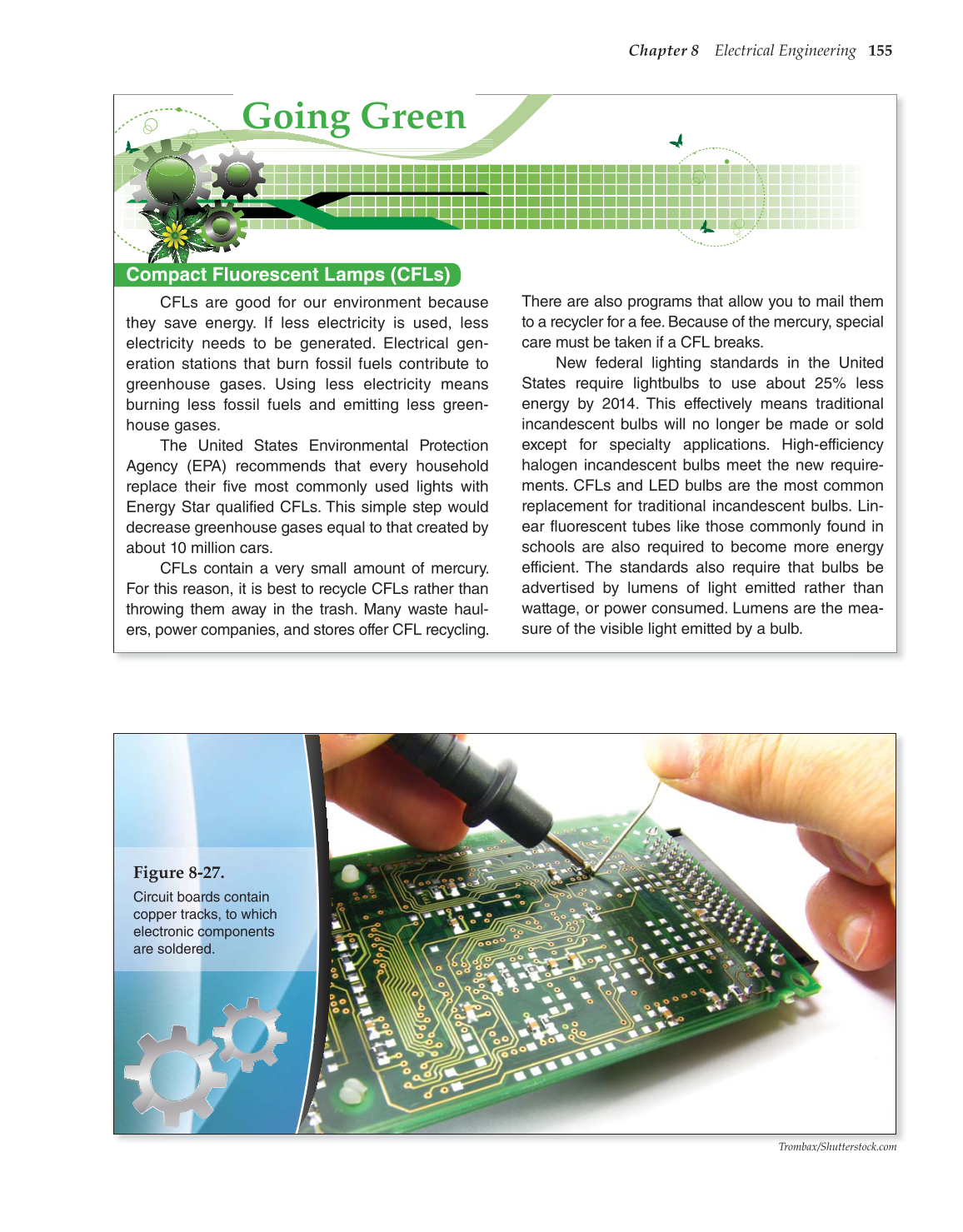Chapter 8 Electrical Engineering 155
Trombax/Shutterstock.comkttt/Shb T
Figure 8-27.
Circuit boards contain
copper tracks, to which
electronic components
are soldered.
Going Green
Compact Fluorescent Lamps (CFLs)
CFLs are good for our environment because
they save energy. If less electricity is used, less
electricity needs to be generated. Electrical gen-
eration stations that burn fossil fuels contribute to
greenhouse gases. Using less electricity means
burning less fossil fuels and emitting less green-
house gases.
The United States Environmental Protection
Agency (EPA) recommends that every household
replace their five most commonly used lights with
Energy Star qualified CFLs. This simple step would
decrease greenhouse gases equal to that created by
about 10 million cars.
CFLs contain a very small amount of mercury.
For this reason, it is best to recycle CFLs rather than
throwing them away in the trash. Many waste haul-
ers, power companies, and stores offer CFL recycling.
There are also programs that allow you to mail them
to a recycler for a fee. Because of the mercury, special
care must be taken if a CFL breaks.
New federal lighting standards in the United
States require lightbulbs to use about 25% less
energy by 2014. This effectively means traditional
incandescent bulbs will no longer be made or sold
except for specialty applications. High-efficiency
halogen incandescent bulbs meet the new require-
ments. CFLs and LED bulbs are the most common
replacement for traditional incandescent bulbs. Lin-
ear fluorescent tubes like those commonly found in
schools are also required to become more energy
efficient. The standards also require that bulbs be
advertised by lumens of light emitted rather than
wattage, or power consumed. Lumens are the mea-
sure of the visible light emitted by a bulb.
